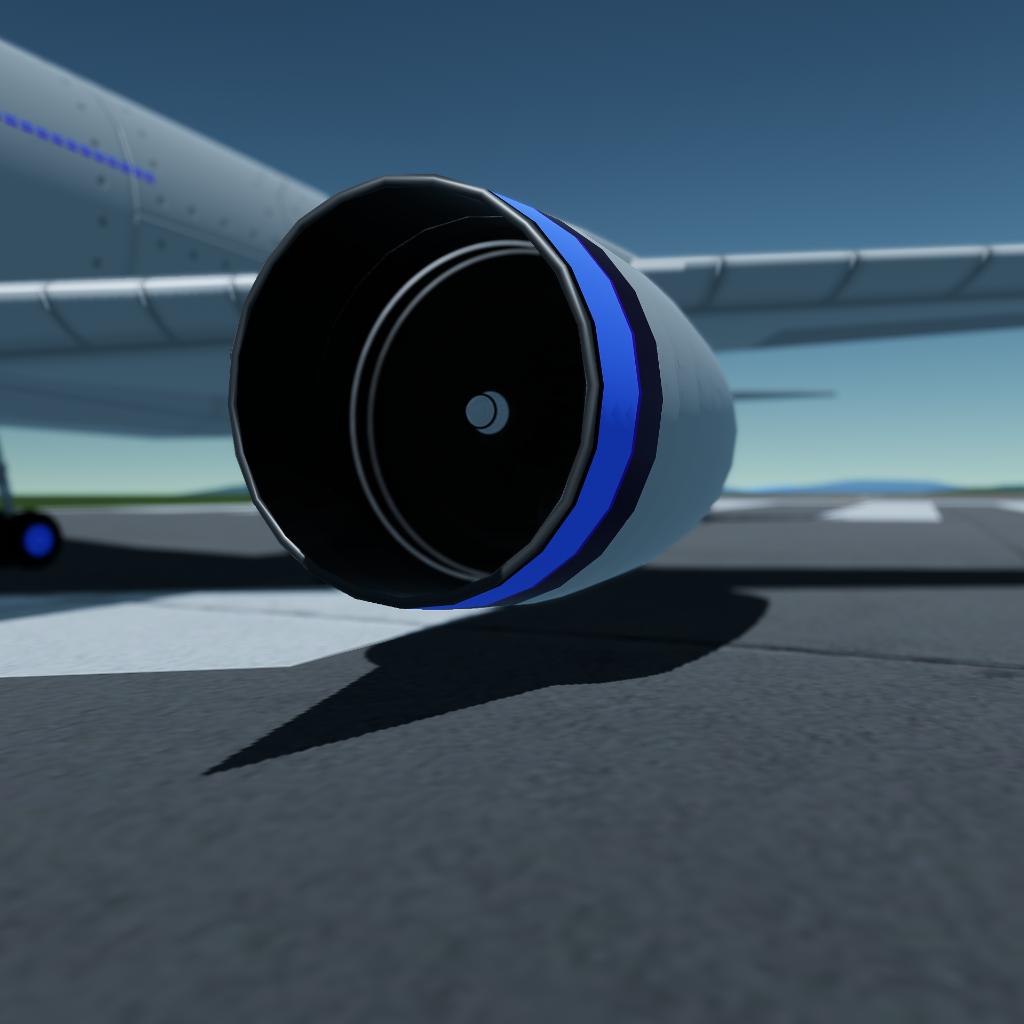WARNING: Ultra physics must be enabled for the engines to not self destruct, because of some propeller bug.
This is the 400 series GEX Airliner capable of flying ridiculously long ranges. Without the use of any cheats or tinker panel. It is not known JUST how far it can fly, (go on test it, i dare you) but judging by the flight panel, it is more than capable of flying over 50,000 km without stopping or refueling. By using jet engines to spin a propeller, i am able to massively amplify the power output of tiny little high-bypass jet engines.
In order to get this efficiency, small jets are placed on a crankshaft which then spins at high speed, which is connected to 6 drone propellers. Its the drone propellers that provide all the thrust. The power generated by the jet engines is magnified, (the amount is dependent on multiple factors), which then in turn means that barely any jet power is needed to achieve flight, so miniscule engines were used for packaging reasons. I also added beacon lights INSIDE the engine so that it looks like there is flames in the combustion chamber when viewed from behind. :).
The pitch of the turbine blades is automatically controlled, no need to fiddle around with sliders.
It has an APU which isn't assigned to an action group, because there was no more action groups. You just gotta find and click it. I think i gave it enough battery so you wouldn't need it, but i put it there anyway just in case. Running out of battery is very bad, as the vizzy can no longer stop the engines from over-speeding or stalling (yes the engines can stall, no i did not intend that as a feature, but i fixed it with vizzy.)
Spoilers: Brake
Slider 1: flaps
Slider 2: trim
Slider 3: Vertical speed multiplicator, When ascending, the slider at 0 means the aircraft will ascend at 25m/s, when descending, at -20m/s In order to reduce the ascent/descent rate, reduce slider 3. In order to increase ascent/descent rate, increase slider 3. This is so you dont stall at high altitudes, as it becomes increasingly difficult to maintain +25m/s at 12+km.
AG 1: Set autopilot altitude
AG 2: Set autopilot heading
AG 3: Set autopilot speed
AG 4: Landing Lights (they tuck away to reduce drag when not in use)
AG 5: AutoTrim
AG 6: NavLights
AG 7: Strobe Lights
AG 8: Landing Gear
AG 9: Beacon Lights
AG 10: Second Stage turbo's
When flying at very high altitudes, (16km+), the jet engines will begin to struggle to keep the props spinning at 4350Rpm as they will lose power. For this reason, auxiliary's jets are attached to the crankshaft to provide additional torque to maintain power. These are useless at low altitudes, and can cause problems, such as turbine oscillations, (The turbine goes fast, slow, fast, slow at increasing magnitude until it overspeed's and destroys everything.) This is controlled by AG 10.
BTW, the wings flex upwards, not by much, as that will reduce efficiency, but i think it looks cool. I also didn't build the thing a cockpit, because they add ALOT of drag (like not even funny) and i also suck at making them. I think i am a much better engineer than elegant architect. I gave it my own Livery, for the agency which i called T.S.A.
Any questions, feel free to ask, because this plane is deceivingly complex.









